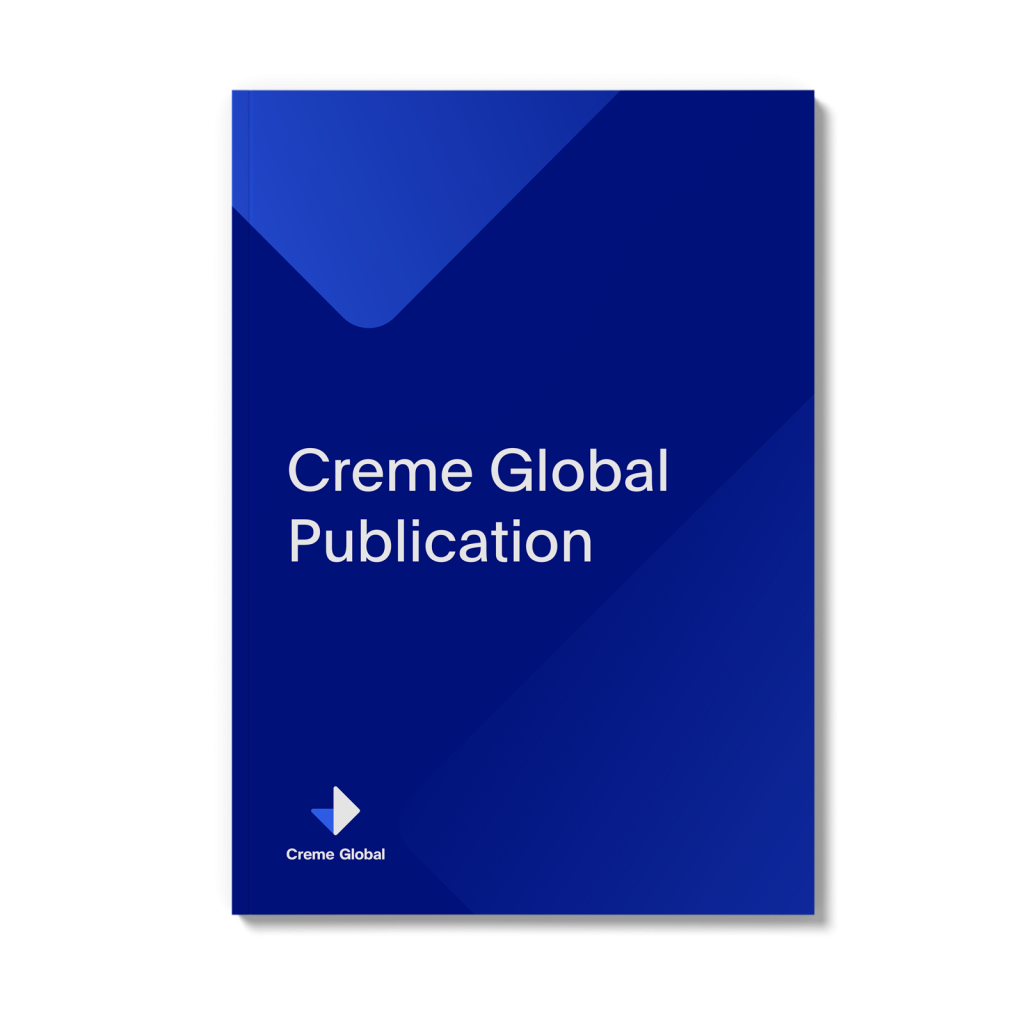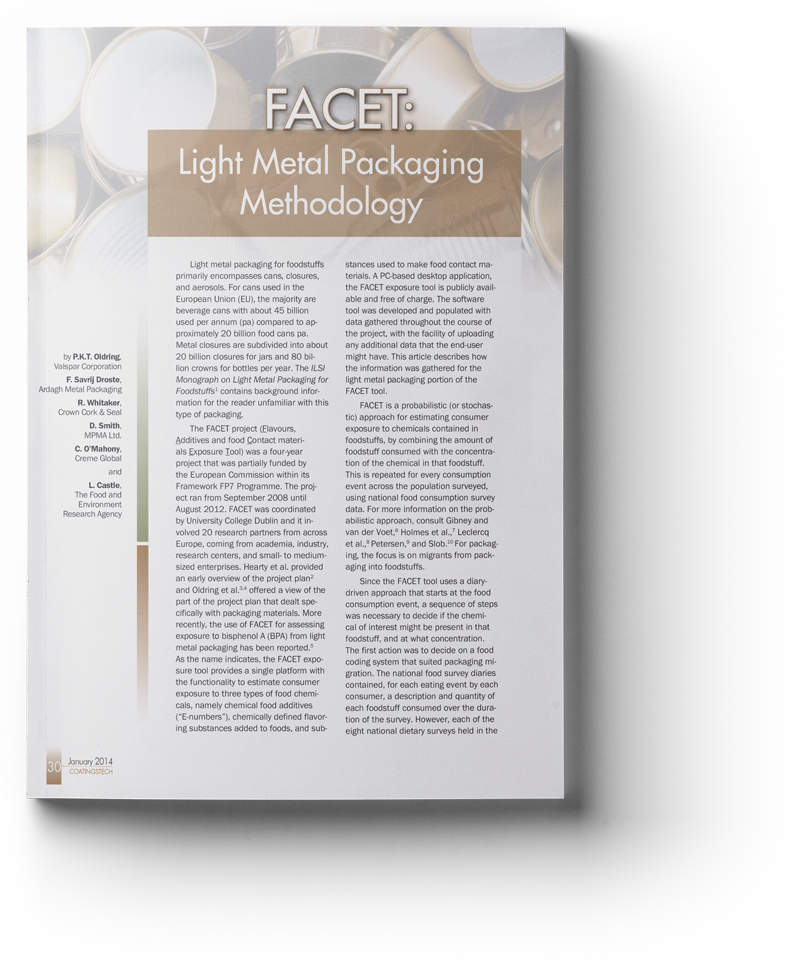The FACET tool is a probabilistic model to estimate exposure to chemicals in foodstuffs, originating from flavours, additives and food contact materials. This paper demonstrates the use of the FACET tool to estimate exposure to BPA (bisphenol A) from light metal packaging. For exposure to migrants from food packaging,…
Authors: Oldring PK, Castle L, O’Mahony C, Dixon J.
Publication date: 20/01/2014

